My journey into weaving
2019.01.15In August of 2017, I took a weekend weaving intensive with Marta Shannon, a weaving artist based in Sonoma County, California. After the class, I remarked that although I loved the ability to make cloth, weaving was too slow of a process and I couldn’t see myself doing it regularly. However, over the next couple of weeks, I found myself continually thinking about the interplay of warp and weft and the complexity of weaving drafts. I started reading blogs (the writings of Tien Chiu and Peggy Osterkamp spring to mind) and fantasizing about color combinations. Eventually, I concluded that weaving was too fascinating to ignore; I had to find myself a loom.
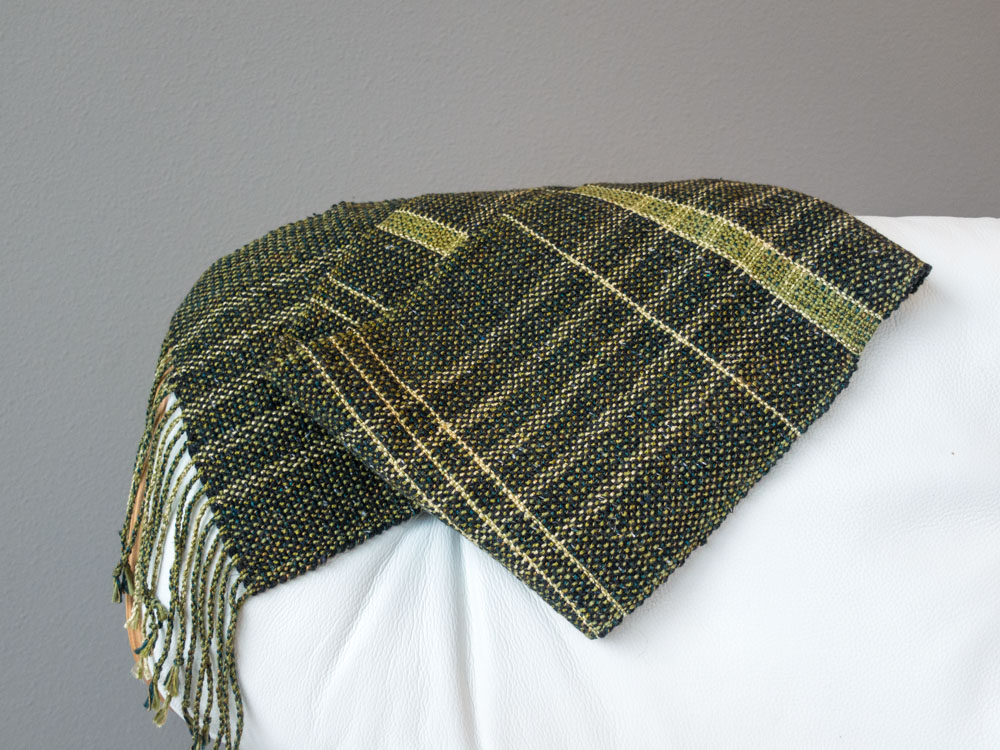
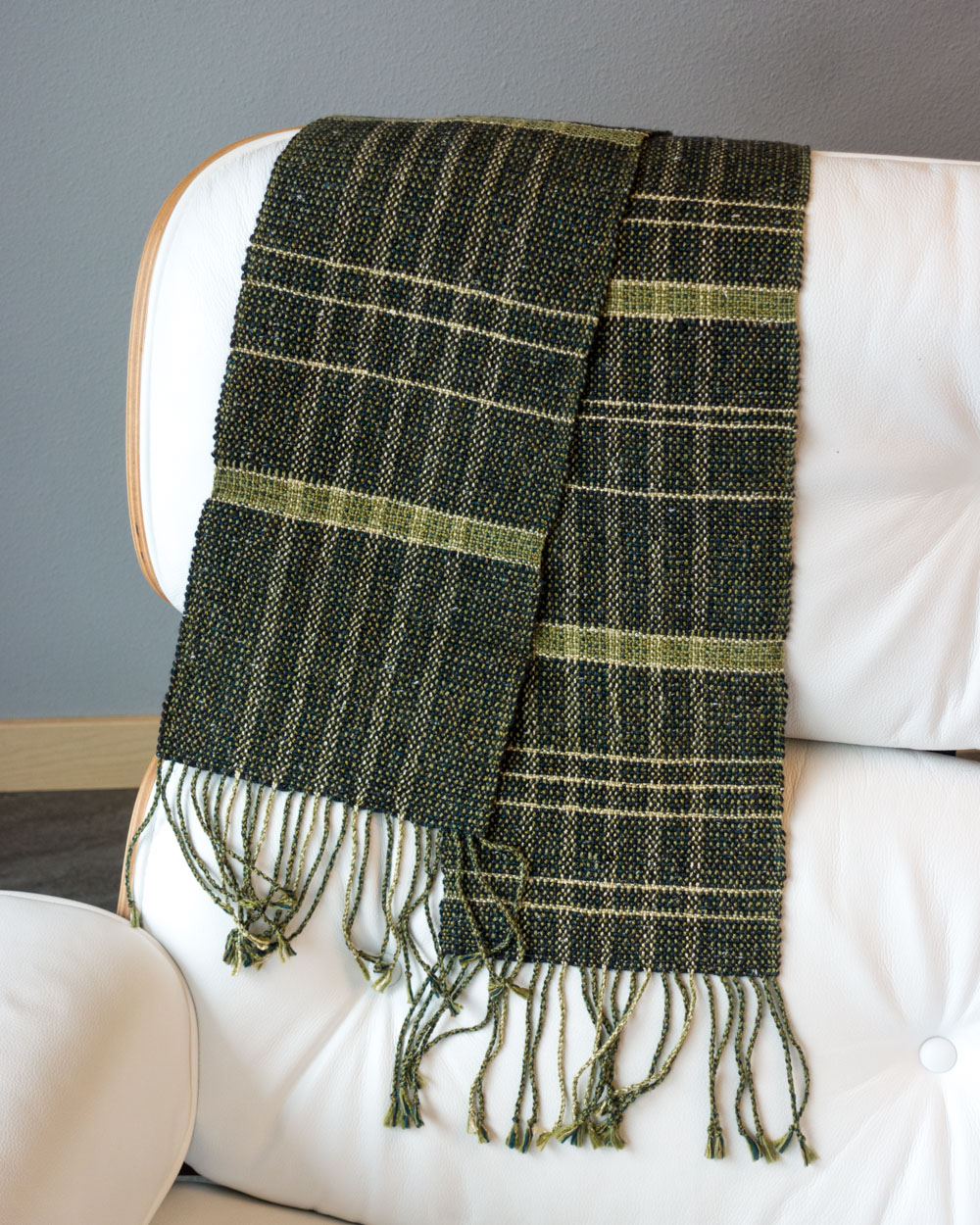
In November of 2017, shortly after moving to Seattle, I scoured Craigslist for a loom. I knew that I wanted a loom with at least 4 shafts and preferably with foot treadles. Luckily, I found exactly what I was looking for. My partner and I drove out to pick up my new loom, floor stand, warping board, and miscellaneous accessories. I was pleasantly relieved when everything fit in the car.
My new-to-me table loom was built by Rasmussen Looms in Seattle. The loom has 4 shafts and a weaving width of 24”. It also has a detachable floor stand with four foot treadles that connect via direct tie-up to the loom shafts.

I was intimidated by the prospect of ordering weaving yarns online, as I had no idea what 8/2 versus 16/2 yarns looked or felt like–did I even want something that thin? Luckily, I found Fiber Rhythm Craft & Design during a trip to Portland. This sizeable weaving store sold everything I needed to get started, and I left the store equipped with about 15 8oz. spools of 8/2 Maurice Brassard cotton, tencel, cottolin, and acrylic.
During Thanksgiving, I fantasized nonstop about weaving projects. When I returned home after spending time with family, I started weaving. Here are my first 5 projects.
“Not everything has to be monochrome”
My boyfriend is a fan of the full greyscale spectrum. When I decided to weave a scarf for him as the first project on my loom, I offered to make it in grey and black, but insisted on including some bright red as an accent color.
The scarf is woven using a 2x2 twill. I selected warp and weft fibers from my Portland haul of 8/2 fibers: grey acrylic, black cotton, and red cottolin (60% cotton, 40% linen). I designed the scarf so that when it’s worn, the grey weft-wise swaths lie at different heights. To break up the monotony of the scarf body, I inserted several subtle sections of reverse twill; three zig-zag sections are scattered throughout the center of the scarf.
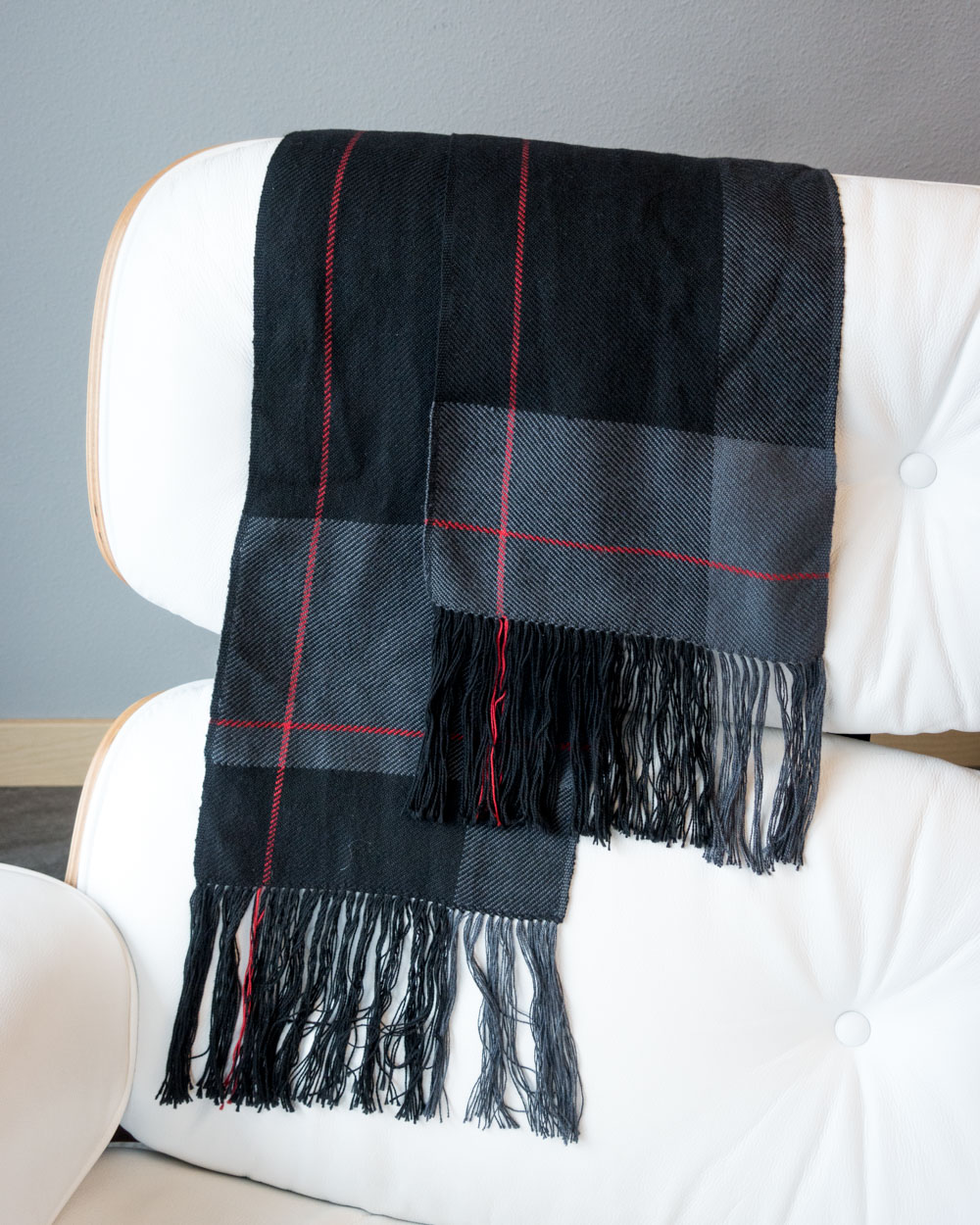
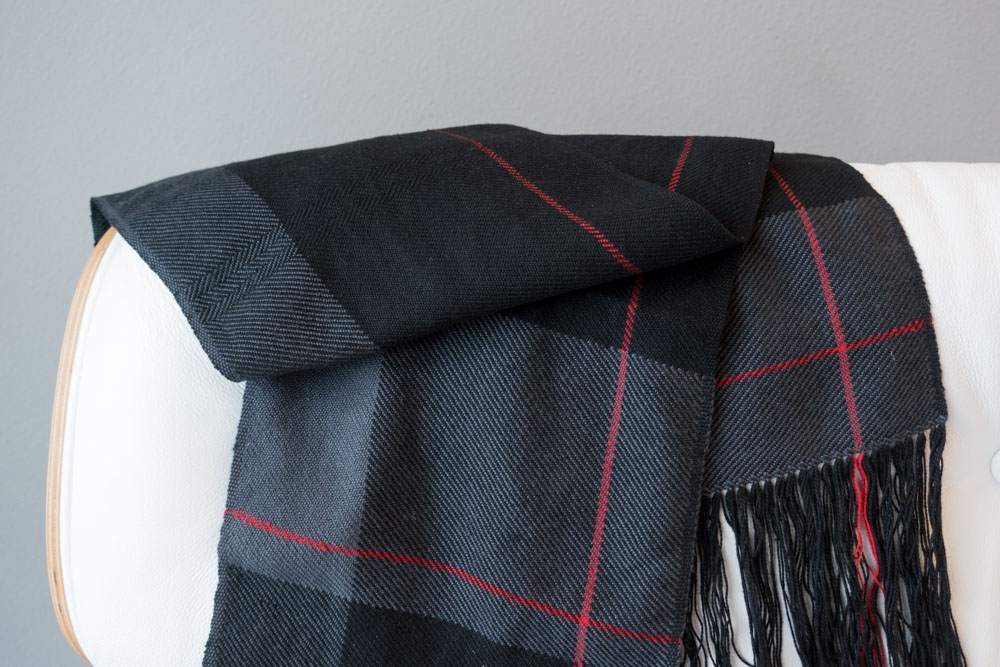
“Rep weave patchwork”
I was able to squeeze one more Christmas scarf in before the holidays. For this scarf, I combined 8/2 threads with some sport-weight merino wool from my yarn stash1 and tried out rep weave for the first time.
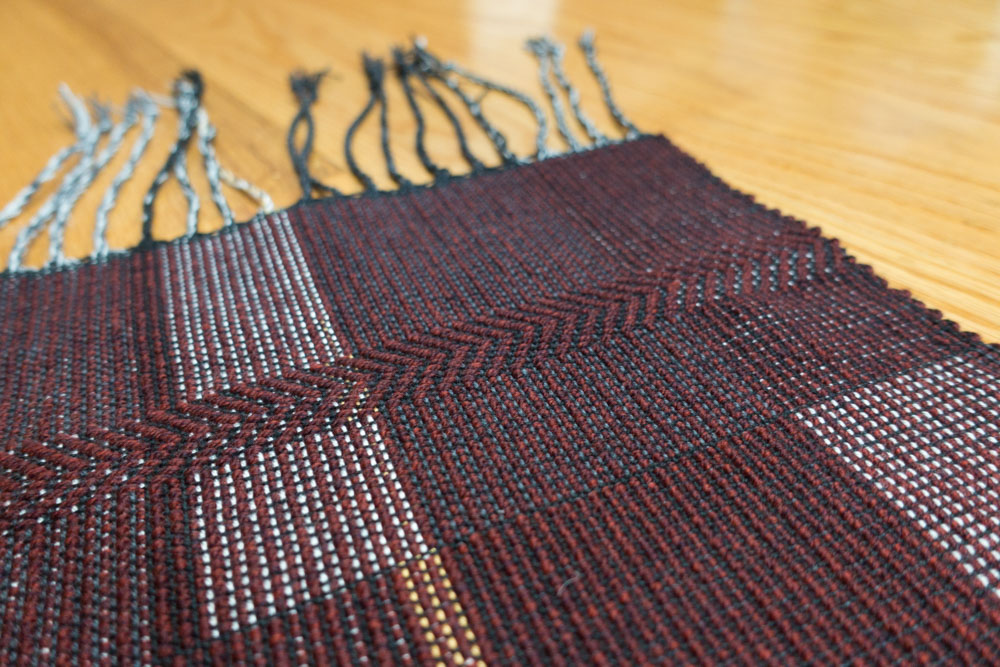
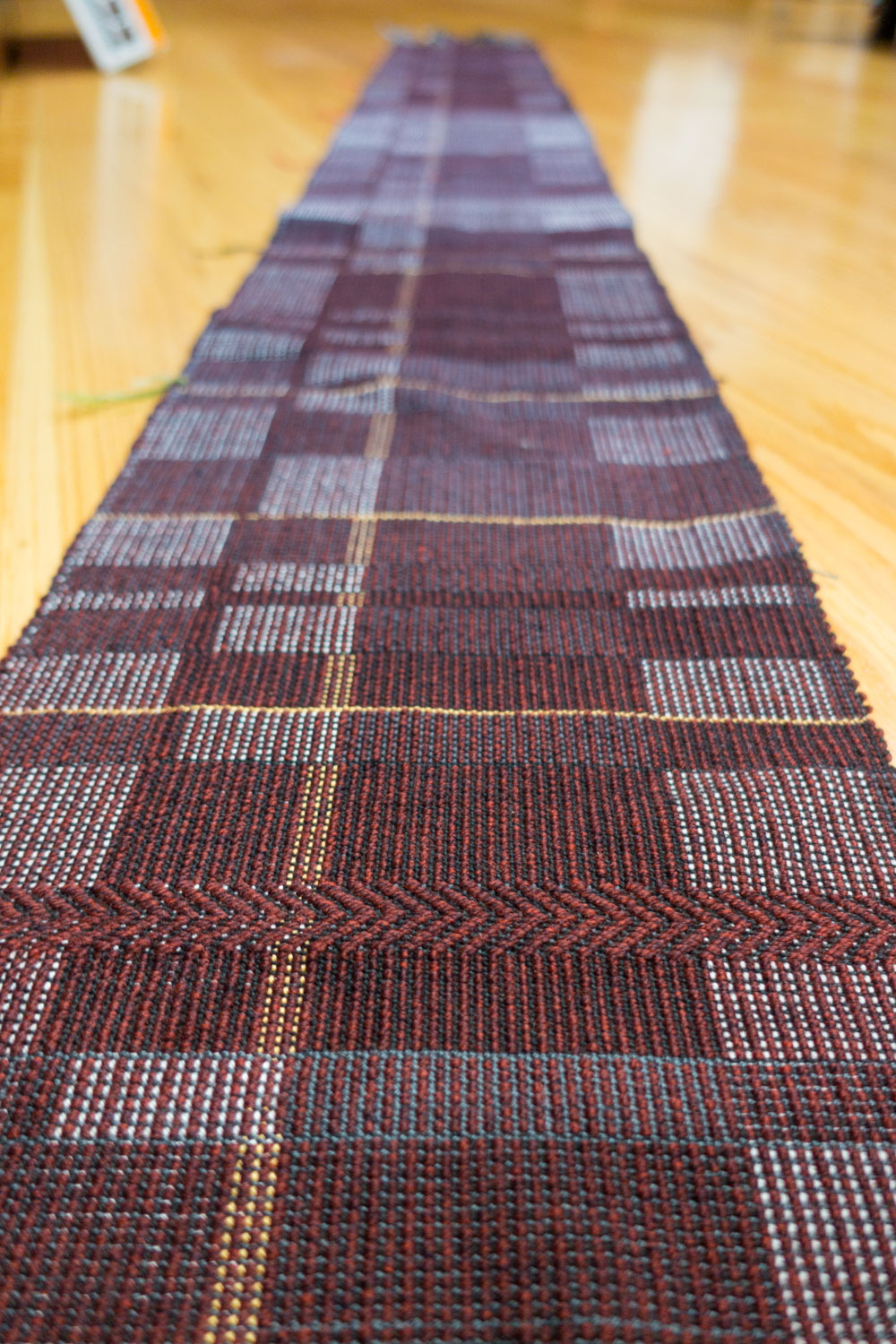
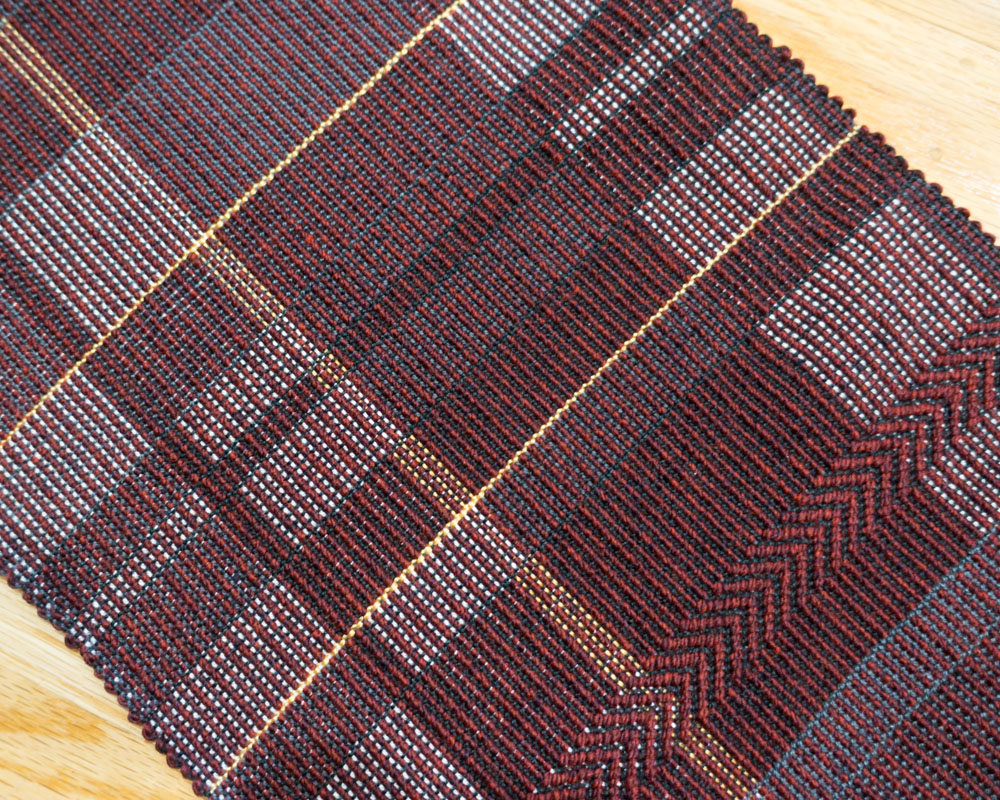
The warp consists of several different colors of 8/2 yarn (white, gold, grey, and black) of different fiber types. The weft consists of alternating rows of dark red merino wool and 8/2 thread (blocks of the same colors used for the warp). The shafts were threaded in a straight-threading pattern, and the overall fabric structure is rep weave, a variant of plain weave.
When weaving rep weave, the warp typically covers up most of the weft yarn, and consecutive weft threads alternate between thick and thin yarns. Warp threads that pass over the thick weft show up better than warp threads that only pass over the thin weft. By making all odd-numbered warp threads color A and all even-numbered warp threads color B, I can make weft-wise stripes that show more of either color A or color B, simply by changing the order of weft threads (thick-thin-thick-thin vs. thin-thick-thin-thick). Using this technique, I created a scarf with a patchwork of different-colored rectangles. However, I did not sett the warp threads very densely because I still wanted the weft colors to show.
As a final design element, I added in a row of chevron arrows at both ends of the scarf. Like the rest of the scarf, the design is implemented using alternating thick-thin weft. However, I wove 2x2 twill for the thick red weft, and regular plain weave for the thin weft.
“Purple and gold”
This scarf was a belated 2017 Christmas gift for my mom. I wove it using a purple cotton weft and tencel warp in dark red and gold. Because of the twill weave and fiber choices, this 8” wide scarf is soft and elegant, with incredible drape.
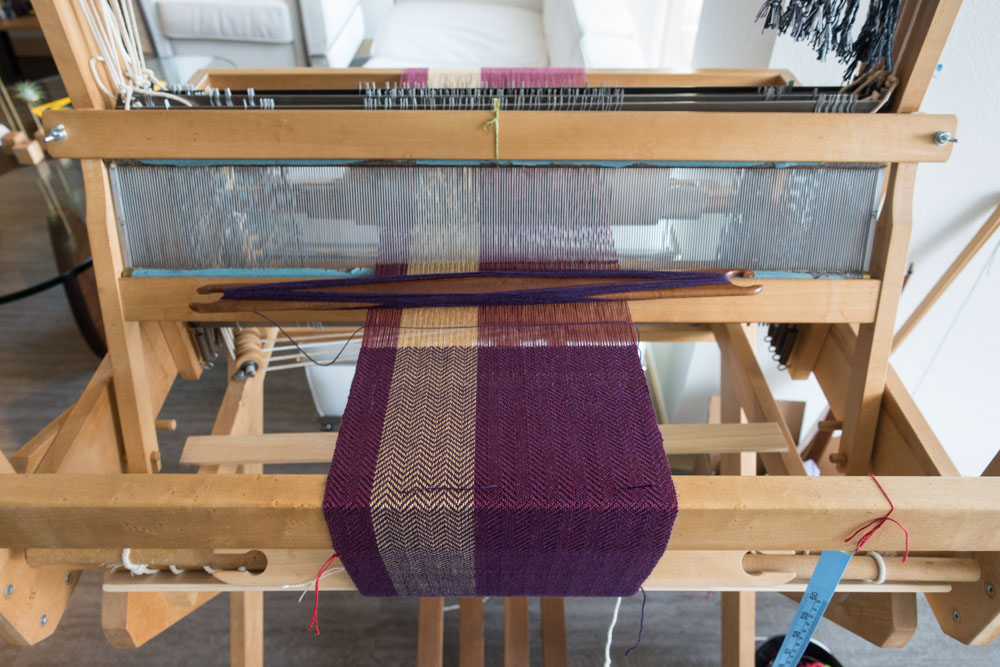
I measured out a 3.5 yard warp and sleyed my 12-dent reed at 24 epi (24 ends per inch, also 24 warp threads per inch). At both ends of the scarf, I broke the chevron pattern by reversing the direction of my treadling to produce a series of subtle diamonds.
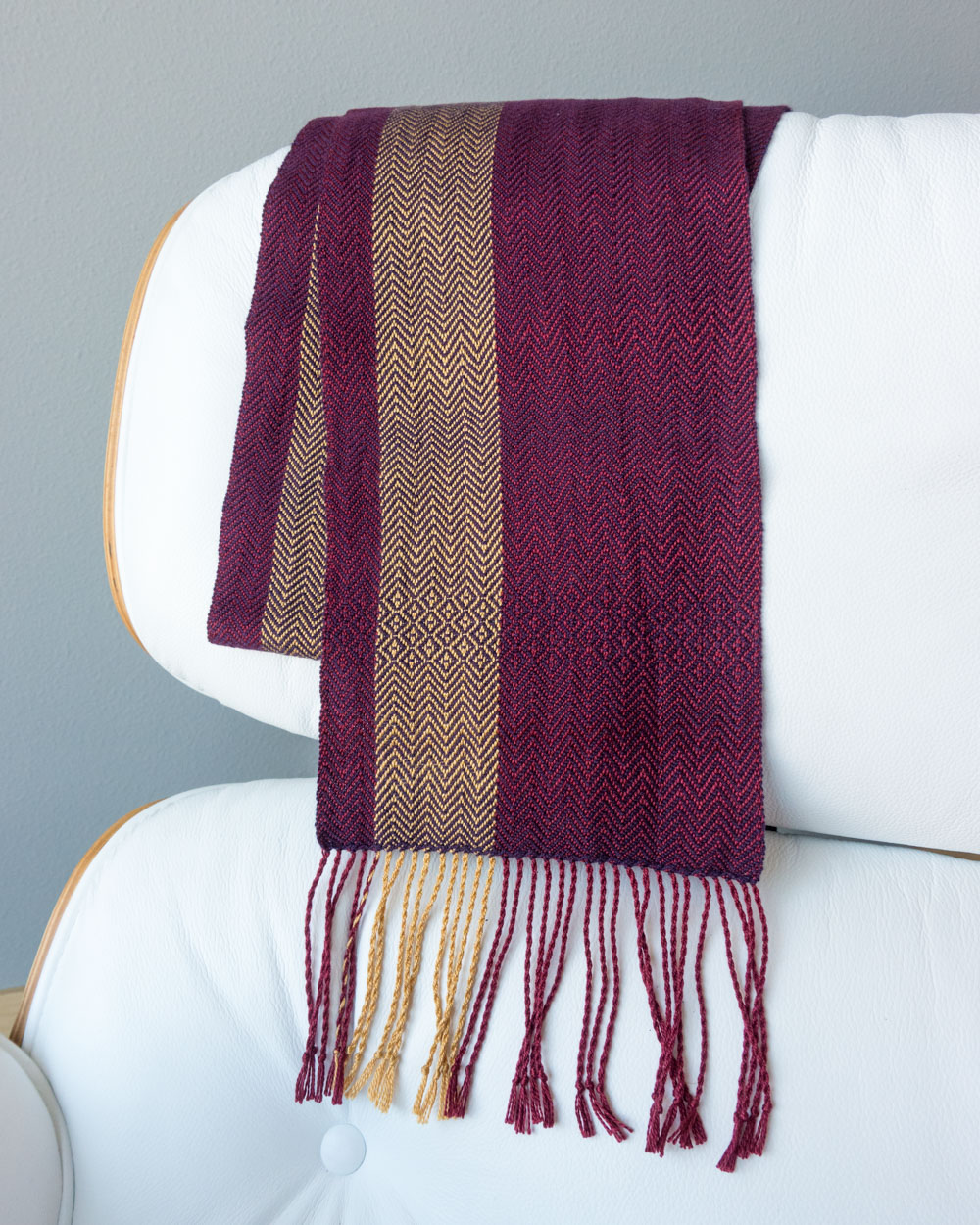
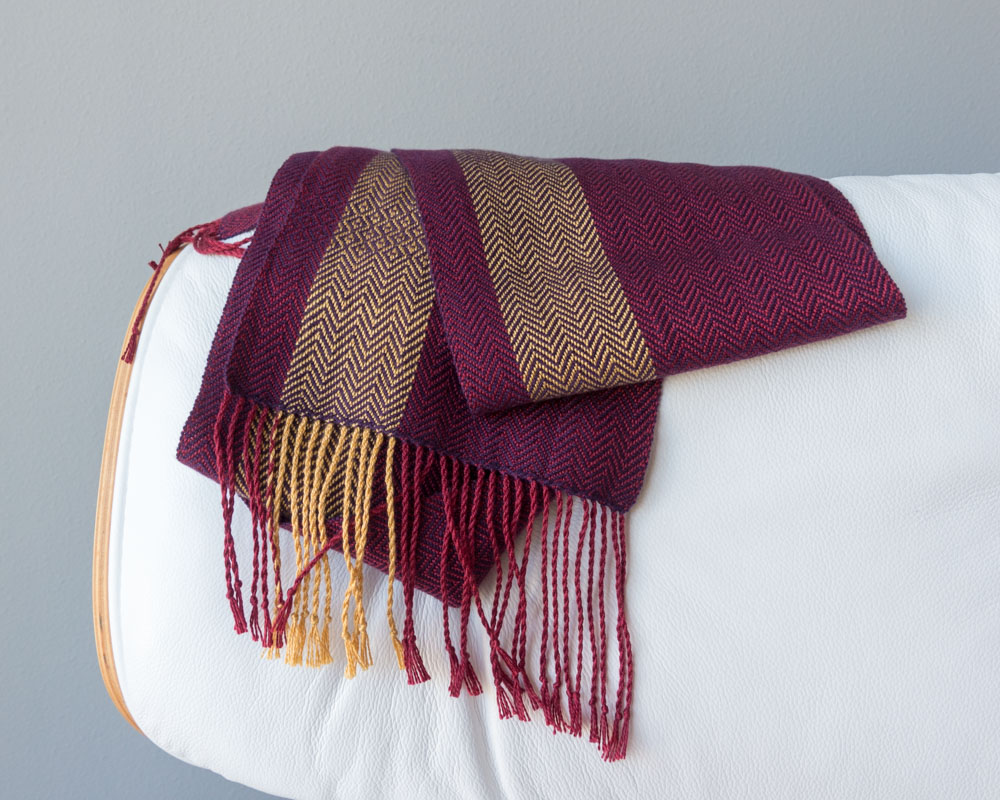
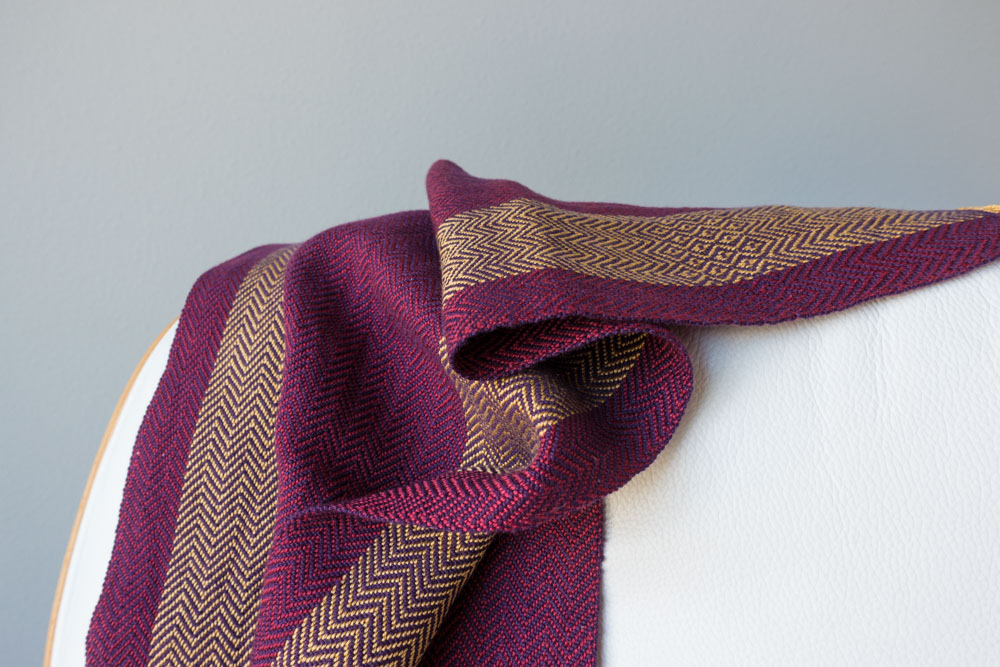
Two experiments with Turned Monk’s Belt
I wound on a 6 yard warp and created two scarf-length projects with geometric accents using Turned Monk’s Belt. Turned Monk’s Belt is a supplementary-warp technique that uses blocks of long warp floats over a plain weave background. By choosing significantly different weft yarns, I was able to weave two pieces that, despite sharing the same warp, look nothing alike.
For the warp, I chose 8/2 lime-green cottolin for the ground cloth, and gold and white 8/2 tencel for the Turned Monk’s Belt pattern elements. I threaded the ground cloth threads through the heddles in a straight-draw pattern, and I passed the supplementary warp fibers between the heddles so that their position did not change when shafts were raised/lowered. The heddles pulled all warp yarns down slightly, which left a small gap between the background warp and the supplementary warp threads that passed straight through to the back of the loom. I chose this setup to give myself the freedom to play with different Turned Monk’s Belt patterns and to avoid having to rearrange hundreds of heddles on the loom shafts.
Because of the weave structures in these projects, I consumed the supplementary warp more slowly than the ground cloth warp. I attached weights to the supplementary warp at the back of the loom to take up the slack and even out the tension.
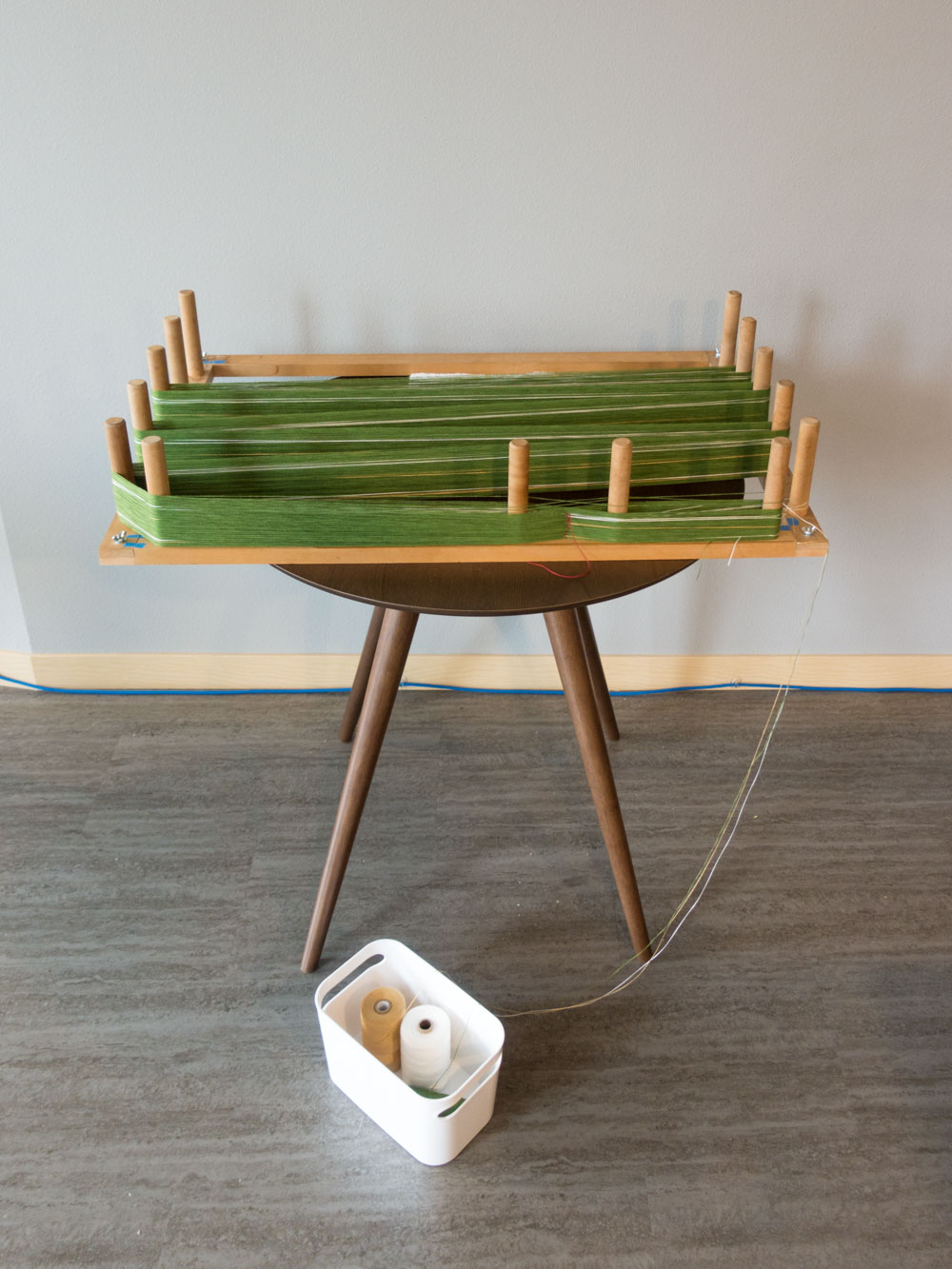
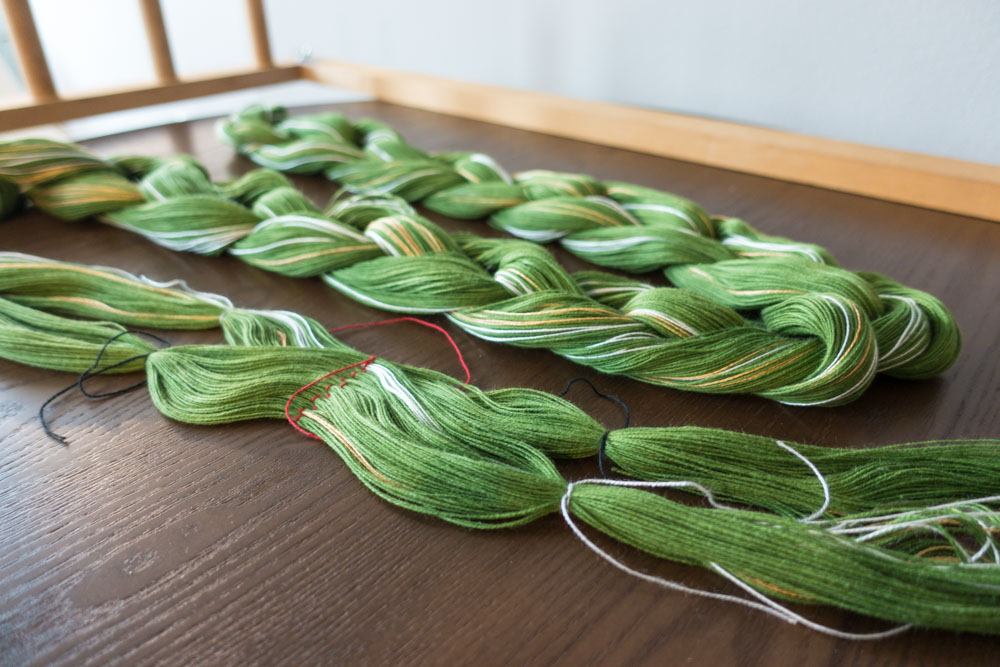
For the first piece, I chose to tone down the bright green warp using purple cotton weft. The resulting fabric appears a muted green from afar. However, up-close, the purple and green threads become distinct and give the piece more energy.
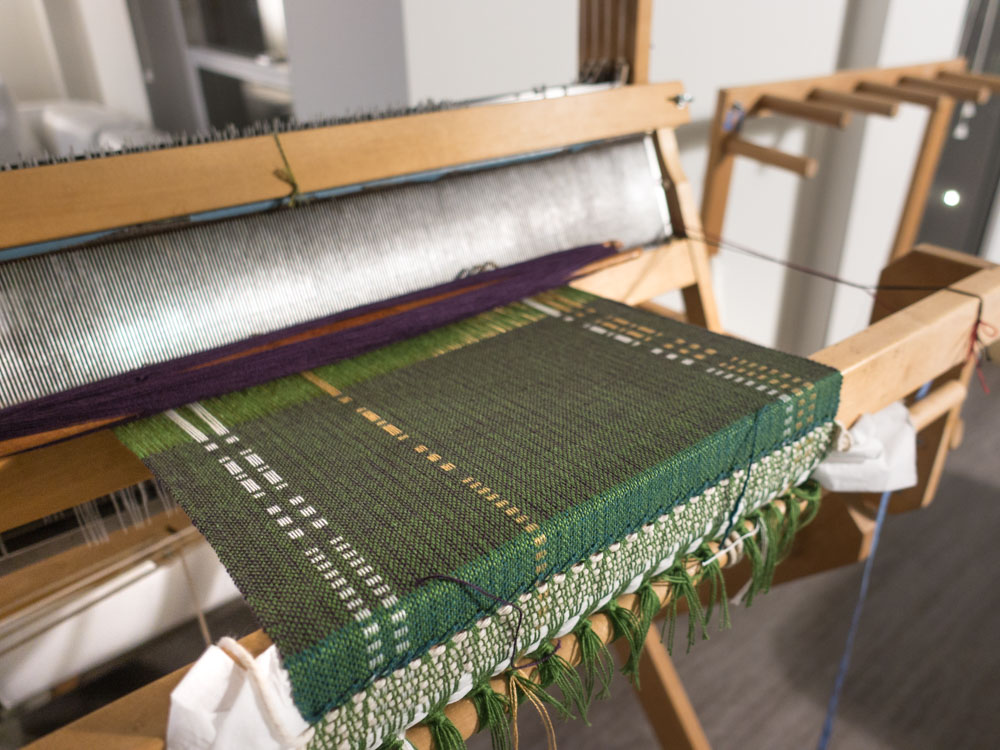
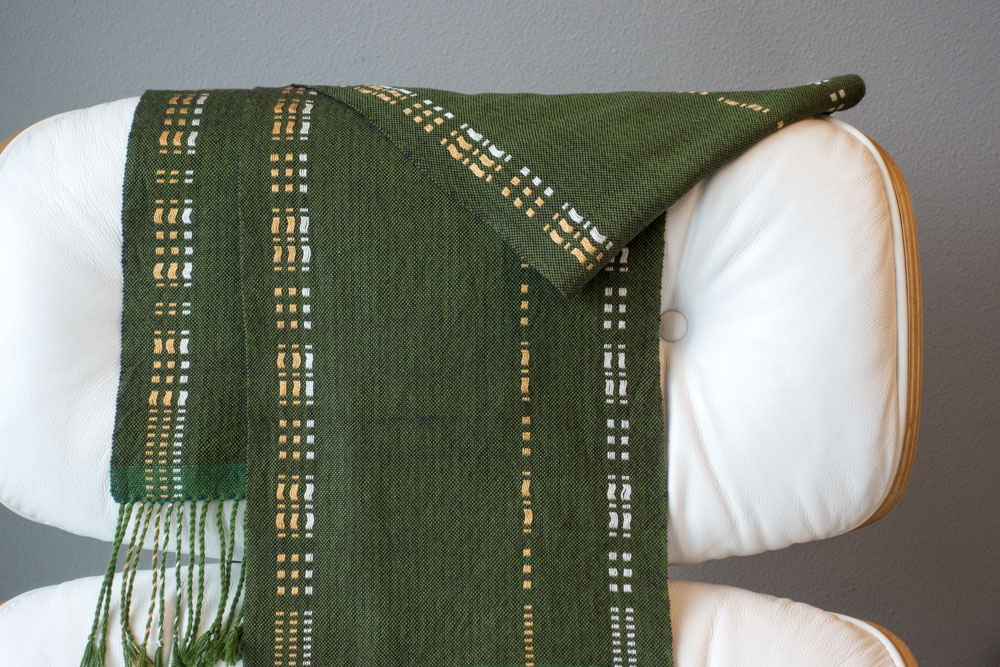
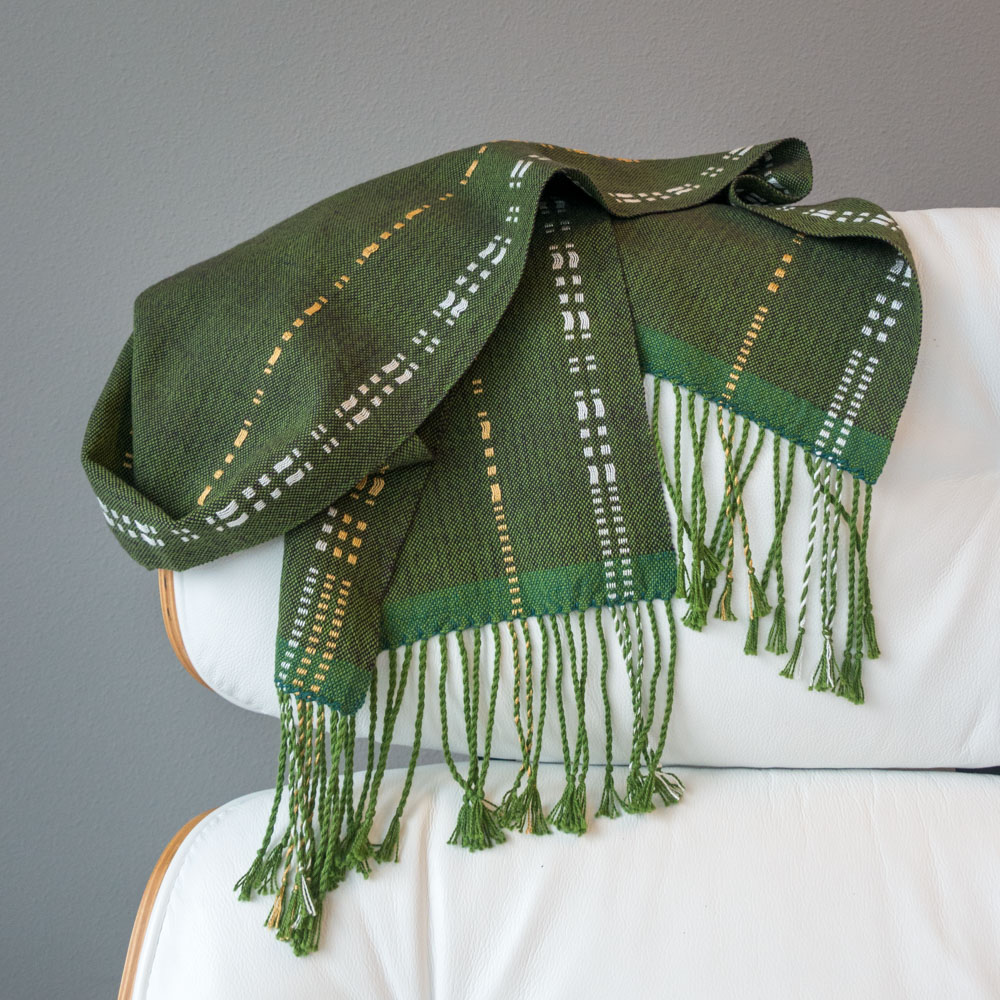
For the weft in the second scarf, I chose a thick wool-blend yarn in light blue and turquoise. I wove 3 sections of distinct weft-wise stripes; the stripes are thin on one end of the scarf, medium-width in the middle, and thick at the other end of the scarf. When moving from one stripe section to the next, I gradually scrambled the order of weft colors to make a random mix, then resolved the colors into stripes of a different width. I chose to make every Turned Monk’s Belt element square, which, combined with the bold stripes, gives the piece a much more playful appearance than the first scarf.
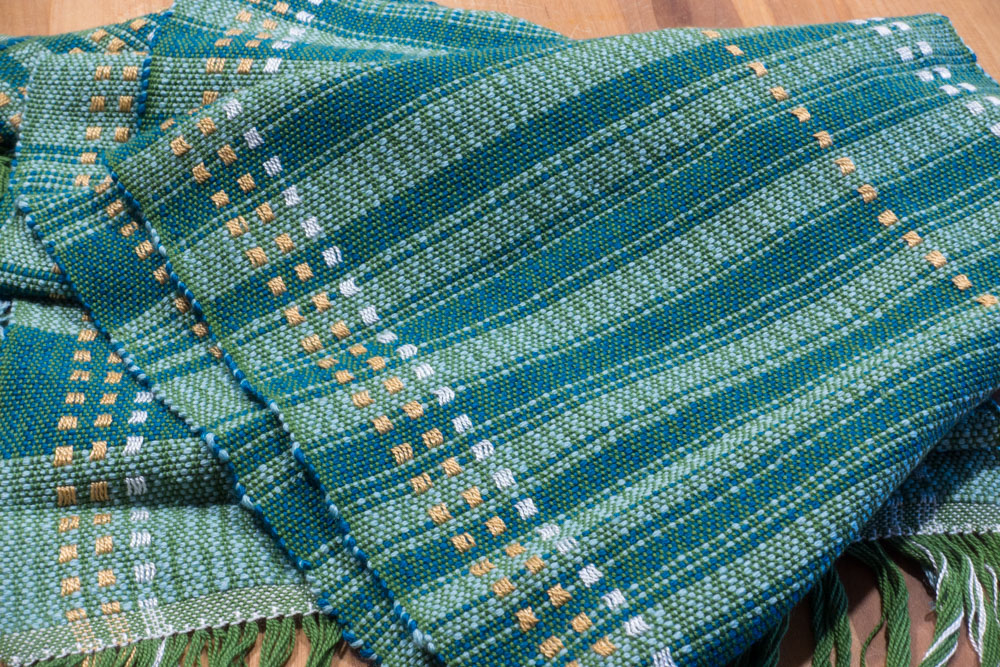
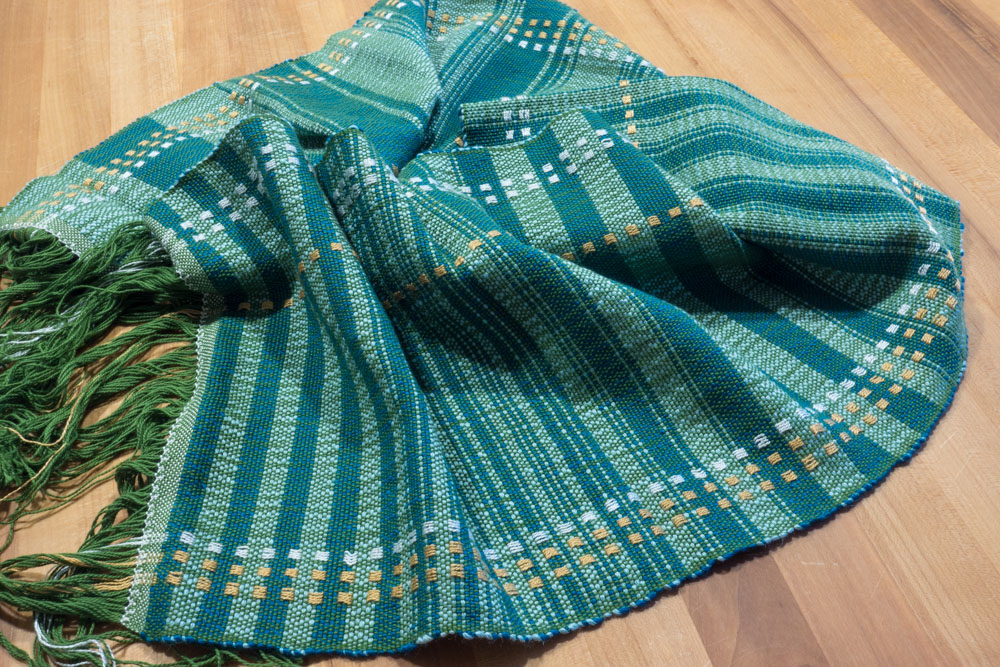
The five projects above were all completed in 2017 and 2018, and are the first projects I wove on my loom. I’ve learned so much along the way, and I’ve had a ton of fun playing with different patterns, colors, and fibers!
-
I’m also a knitter, and I try to contain my knitting and weaving yarns in a single plastic bin. However, I’m currently failing at this task. I have cardboard boxes of 8oz. spools sitting in various corners and some 1lb. cones piled haphazardly next to my loom. Who knew that weaving cones took up so much space? The lid of my large plastic bin just barely closes–I need to sit on it to get the industrial-strength latches closed. ↩